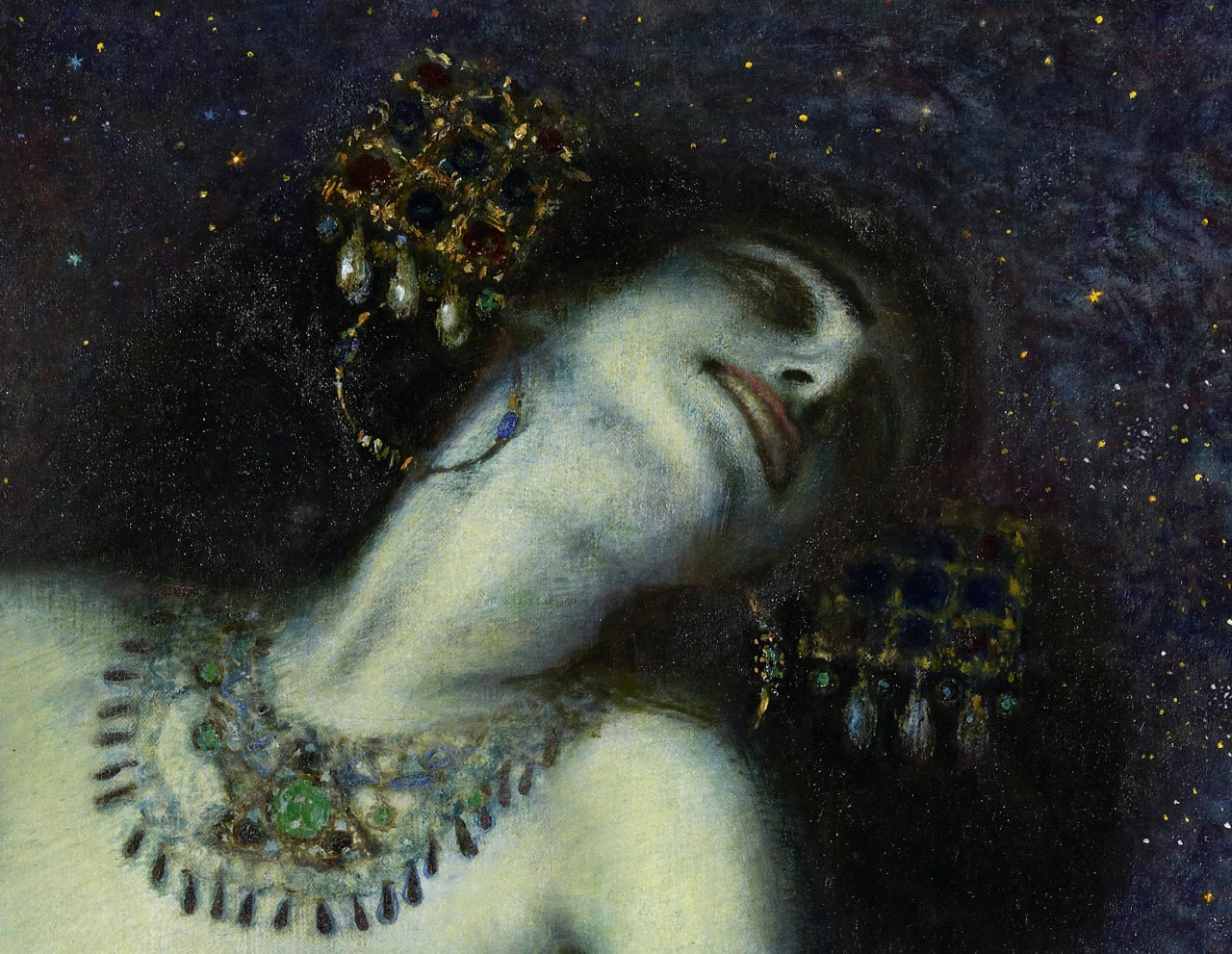Stuck was one of the founders of the Secession in Munich, 1892. In 1895, the year in which this picture was painted, he was appointed a professor at the Academy of Fine Arts, where Kandinsky and Klee both became his pupils. He was the main exponent of the enigmatic imaginary world of symbolism, a model to follow for the experimenters of painting in late 19th century Munich. The lethal embrace of the femme fatale, the sensuously attractive, demonic woman is a theme which recurs frequently in his works. Each stylistic device – the composition crammed in a tight, narrow space, the rude colors (which have unfortunately darkened with the passage of time), and the bulky modelling – intensifies the passions the picture.
In Greek tradition, the Sphinx has the head of a human, the haunches of a lion, and sometimes the wings of a bird. It is mythicized as treacherous and merciless. Those who cannot answer its riddle suffer a fate typical in such mythological stories, as they are killed and eaten by this ravenous monster. This deadly version of a sphinx appears in the myth and drama of Oedipus. Interestingly, the Egyptian sphinx is typically shown as a man (an androsphinx), and was viewed as benevolent, but having a ferocious strength like the malevolent Greek version. Both were thought of as guardians often flanking the entrances to temples. Harry Potter fans may be confused, as JK Rowling’s version of the sphinx is Egyptian but female.
This painting is grand melodrama painted in a blaze of fiery red. Locked in a passionate kiss, the sphinx presses her lips against the man's like a vampire, as if to suck the life out of him. It was a poem by Heinrich Heine that inspired Stuck to paint this triumph of woman over man. In the 19th century, the sphinx depicted various struggles: the battle between animal instincts and the intellect, the eternal conflict between man and woman, or the search for the meaning of human existence. There lies the sphinx, this time a bewitchingly beautiful woman, on a low slab of rock. With her lion's claws, she clasps the body of the unfortunate, who has sunk to his knees, while her lips press against his. The painting caused a sensation in Munich. The police ordered all reproductions removed from the windows of art galleries. The painting was regarded as a universal symbol of the passion that leads to downfall. You’ve come a long way, baby!
- Clinton Pittman


 Franz von Stuck
Franz von Stuck